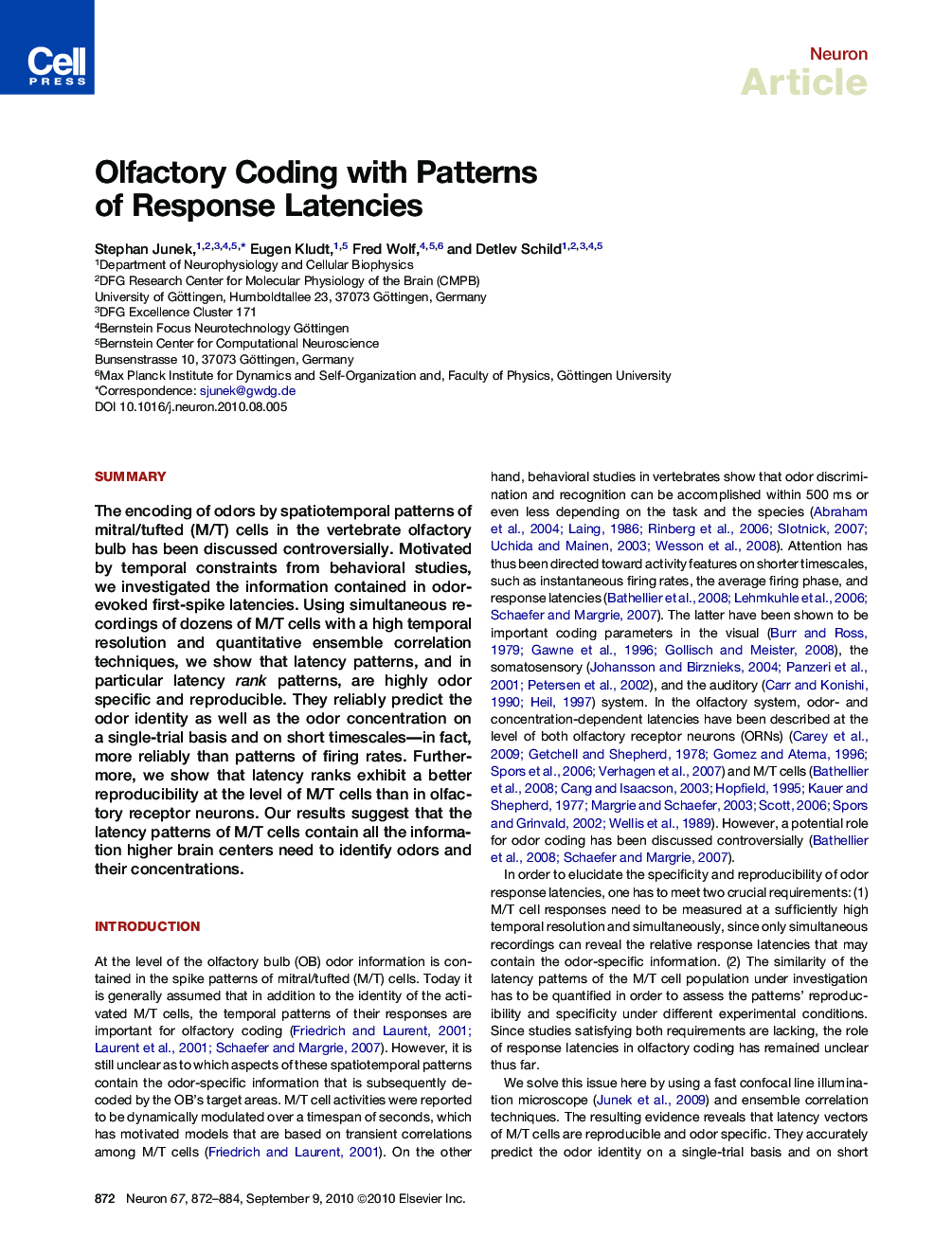| Article ID | Journal | Published Year | Pages | File Type |
|---|---|---|---|---|
| 4321925 | Neuron | 2010 | 13 Pages |
SummaryThe encoding of odors by spatiotemporal patterns of mitral/tufted (M/T) cells in the vertebrate olfactory bulb has been discussed controversially. Motivated by temporal constraints from behavioral studies, we investigated the information contained in odor-evoked first-spike latencies. Using simultaneous recordings of dozens of M/T cells with a high temporal resolution and quantitative ensemble correlation techniques, we show that latency patterns, and in particular latency rank patterns, are highly odor specific and reproducible. They reliably predict the odor identity as well as the odor concentration on a single-trial basis and on short timescales—in fact, more reliably than patterns of firing rates. Furthermore, we show that latency ranks exhibit a better reproducibility at the level of M/T cells than in olfactory receptor neurons. Our results suggest that the latency patterns of M/T cells contain all the information higher brain centers need to identify odors and their concentrations.
► Response latencies of an ensemble of mitral cells are highly odor specific ► Latency patterns are excellent predictors for odor identity and concentration ► Latency patterns predict odors on behavioral relevant timescales ► Latency patterns are better odor predictors than firing rate patterns
